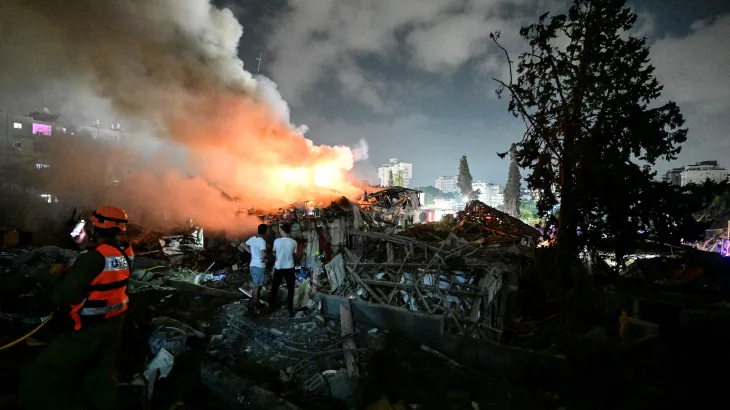Tehran: In one of its most extensive military operations in recent years, Israel launched a large-scale aerial assault on Iran overnight, striking dozens of high-value military and nuclear-related targets across the capital, Tehran. According to the Israel Defense Forces (IDF), the offensive aimed at crippling Iran’s missile production capacity and striking deep into the heart of its defense infrastructure.
The Israeli military confirmed that over 60 Air Force fighter jets participated in the operation, targeting what it described as “the industrial center of gravity” of the Iranian Ministry of Defense. Among the primary locations hit were missile manufacturing sites around Tehran, specifically those involved in producing missile components and rocket engines. These facilities, according to the IDF, had been developed over many years and represented a core pillar of Iran's long-range weapons capabilities.
One of the most significant targets of the operation was the headquarters of the SPND program—an Iranian defense research and development agency that U.S. intelligence has labeled the successor to Iran’s nuclear weapons program that was officially halted in 2004. This same site had reportedly been targeted in earlier Israeli strikes, and its inclusion in the latest wave highlights its continued strategic relevance.
The strikes also come just weeks after the U.S. State Department imposed fresh sanctions on SPND and several affiliated scientists, citing their potential role in advancing weapons of mass destruction. The U.S. warned that entities linked to SPND posed a material threat to non-proliferation efforts, aligning with Israel’s long-held stance that Iran’s defense research is a front for nuclear ambitions.
With Israeli jets flying deep into Iranian airspace and hitting targets directly in the capital, the operation marks a major escalation in the Israel-Iran conflict. As the international community watches closely, the potential for further retaliation remains dangerously high. For now, the streets of Tehran remain tense and anxious, as Iranians wake to another day of uncertainty under the shadow of war.








